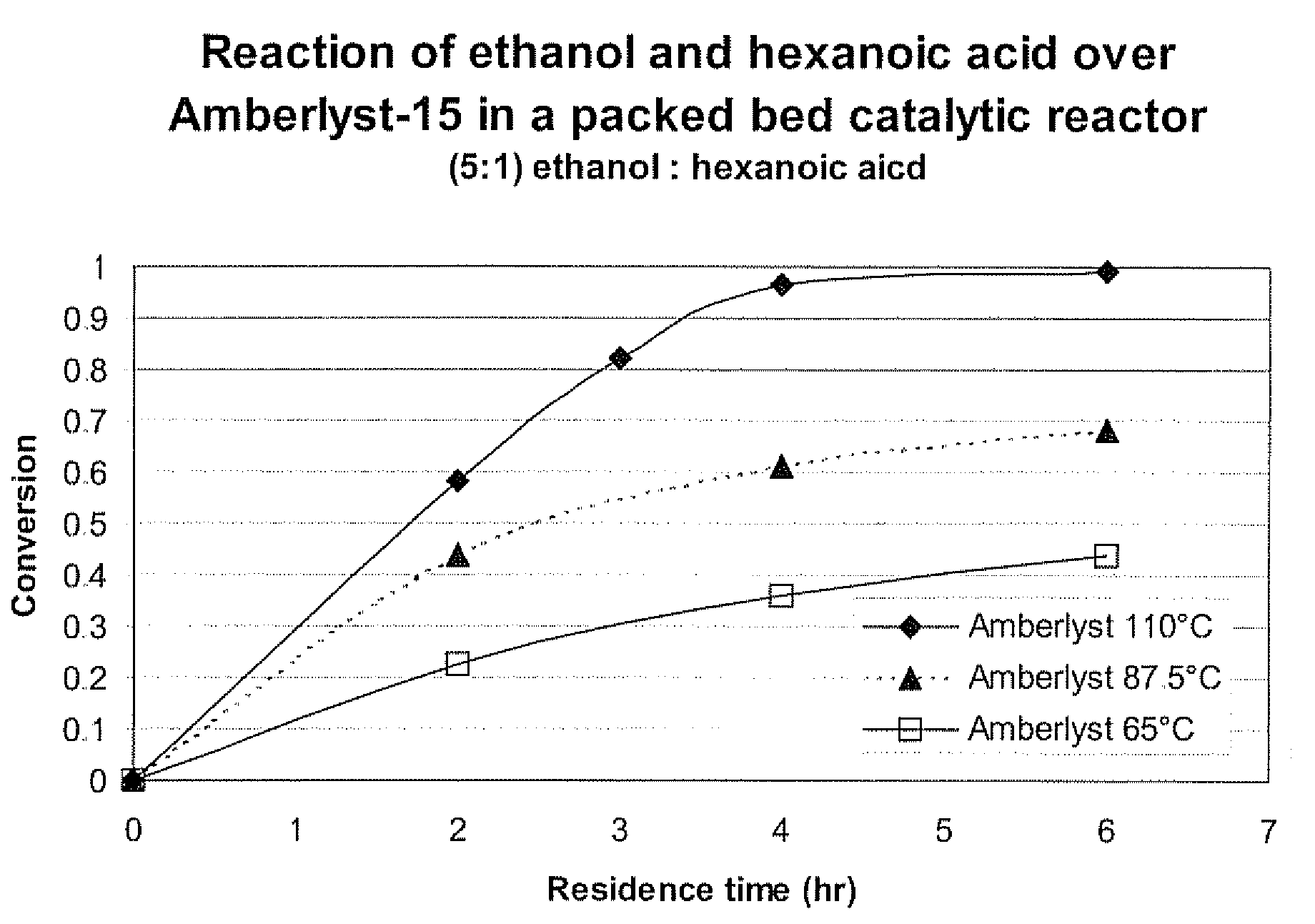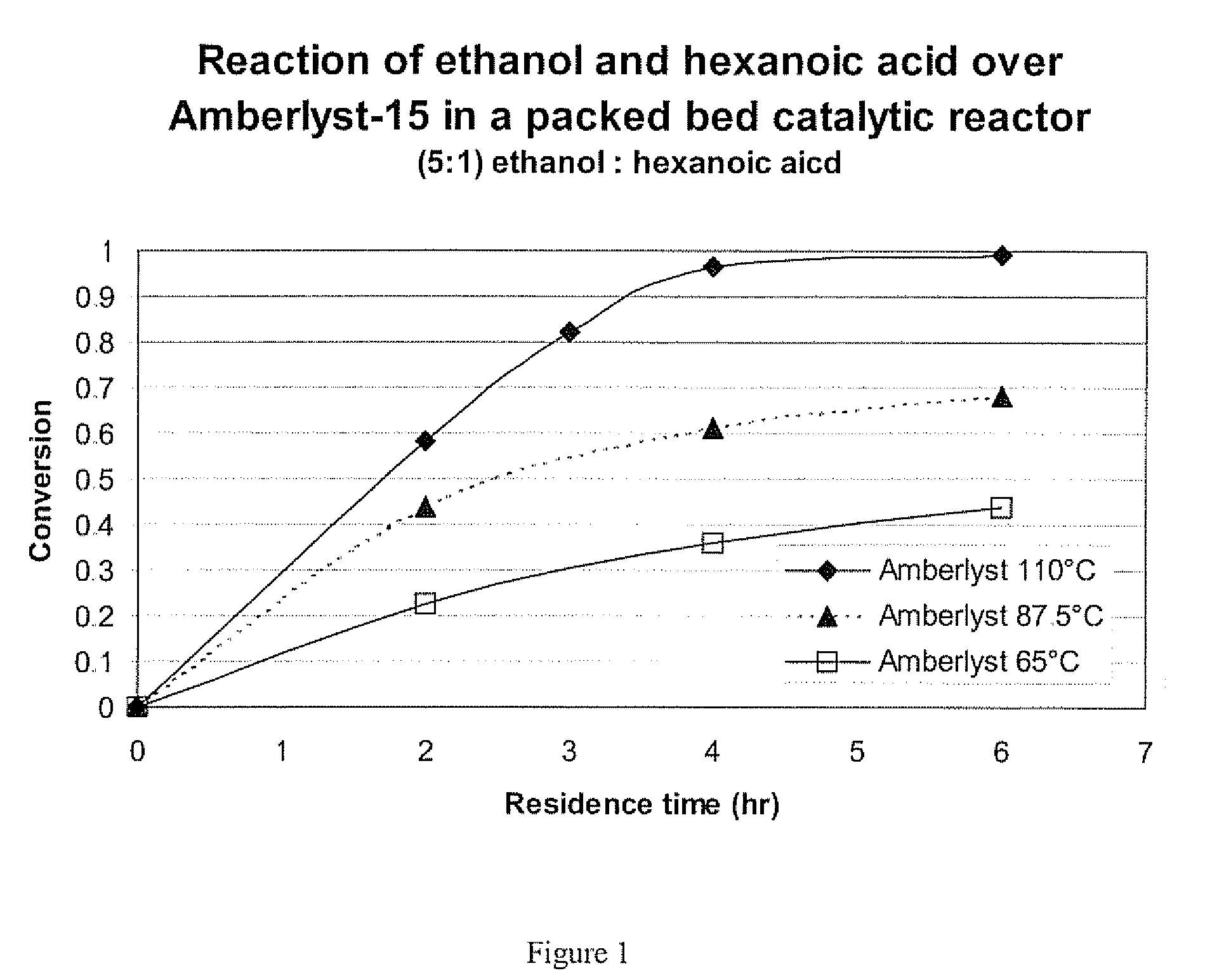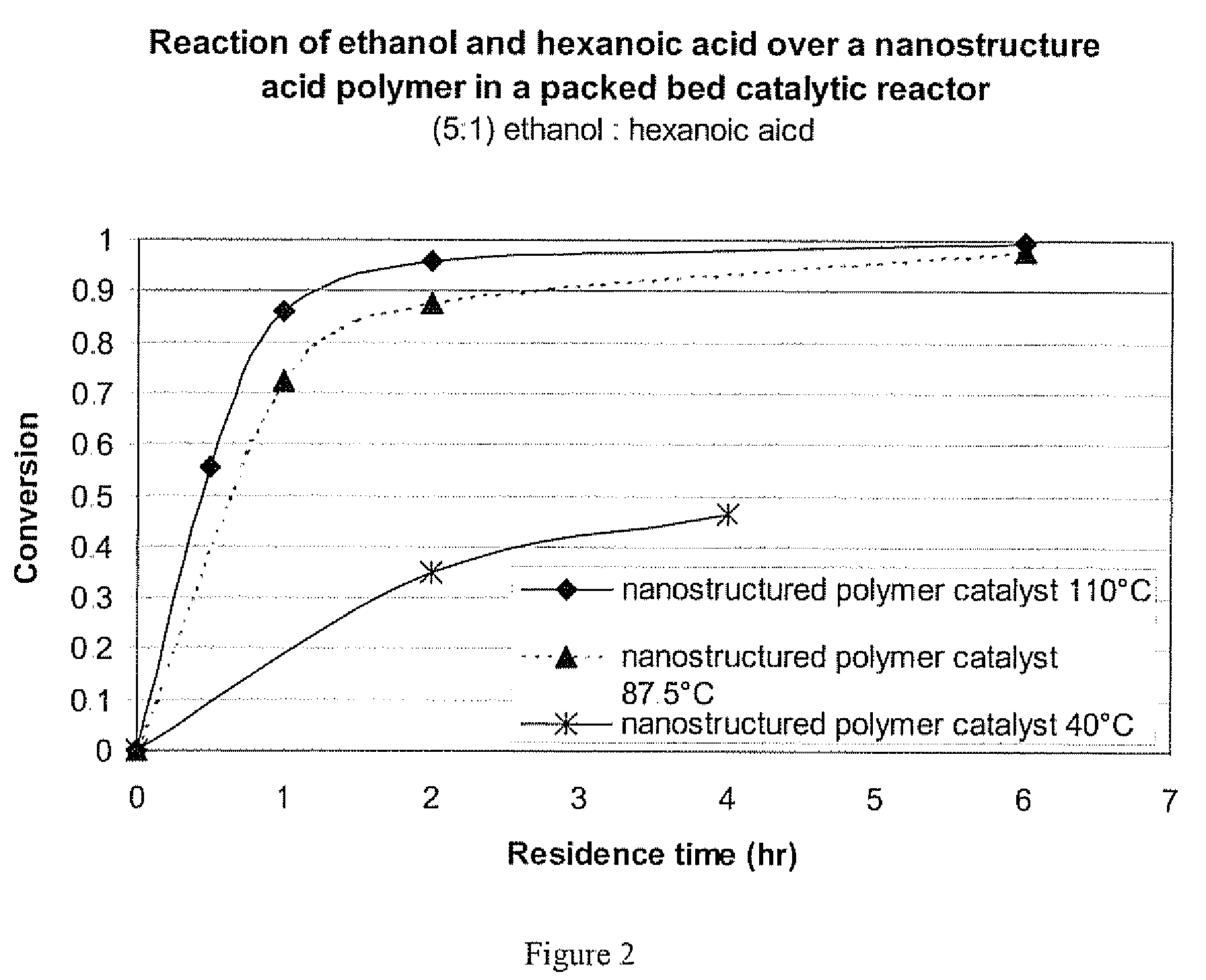Method of making alkyl esters
a technology of alkyl esters and alkyl esters, which is applied in the field of alkyl esters, can solve the problems of high transesterification process, high fuel feedstock cost, and complicating product recovery and purification, and achieves the effect of complicating the alkyl ester product recovery horn glycerin
- Summary
- Abstract
- Description
- Claims
- Application Information
AI Technical Summary
Benefits of technology
Problems solved by technology
Method used
Image
Examples
example 1
[0042]Palmitic acid (90%, Sigina-Aldrichi) was combined with ethanol at a composition of 1 mole palmitic acid to 5 moles ethanol. Palmitic acid is a solid at room temperature and must be heated to about 60° C. to first melt it prior to mixing with hot ethanol, or alternatively the mixture can be combined and heated to about 50° C., at which point this amount of palmitic acid will dissolve in ethanol. The reactants were then heated and pumped through a packed bed catalytic reactor containing Amberlyst-15. The reactants were maintained at a temperature above 60° C. prior to entering the catalytic reactor. The temperature of the reactor was kept at a temperature of between 60° C. and 120° C. For each run an elevated pressure was maintained on the reactor and pre-reactor feed lines suitable to keep the ethanol and reaction by-product water in a liquid state.
[0043]Run 1 used a pre-reactor temperature of 80° C. and a reactor temperature of 120° C. (reactor contained a packed bed of Amberl...
example 2
[0048]Hexanoic acid is a liquid at room temperature and like longer chain free fatty acids found more commonly in vegetable oils and animal fats. It too can be reacted with alcohols over an acid catalyst to form alkyl esters. Ethyl hexanoate (the ester of ethanol and hexanoic acid) is an artificial flavoring, similar to orange oil, for food, beverages and perfumes.
[0049]Specifically, ethanol (anhydrous, Aldrich) and hexanoic acid (Aldrich) were mixed at a ratio of 5 moles alcohol to 1 mole acid. This liquid at room temperature was then pumped through a packed bed catalytic reactor containing Amberlyst-15 catalyst that was further ground and sieved to particles with diameters from 38 to 53 microns. The conversion of the hexanoic acid to ethyl hexanoate was determined by gas chromatography. This reaction was performed at the following temperature and residence time conditions and all experiments used a pressure of 65 psia: 2 hours and 110° C., 3 hours and 110° C., 4 hours and 110° C.,...
example 3
Short-Chain Alkyl Esters using a Nanostructured Polymeric Catalyst
[0051]Nanoporous polymeric catalysts have demonstrated utility for acid catalyzed low-temperature reactions such as esterifications as described in Yanjie Xu, Douglas L. Gin, and Brian J. Elliott, “Catalyzed Dioctyl Phthalate Formation Using a Nanostructured Solid Acid Resin”AIChE Journal, Vol 52, no. 1 January 2005, herein incorporated by reference. Nanoporous polymer acid catalysts were prepared by the methods described by Xu et al. The ethyl-sulfonic acid tri-acrylate polymerizable surfactant was specifically prepared as described in Xu et al. (Xu, 2004), and were polymerized in the inverted hexagonal phase. In this case, structure-directing amino acid surfactant was not used as described, but a sample made entirely from the ethyl sulfonic acid surfactant, which had an inverted hexagonal phase mixed with some other liquid crystalline phase or phases, was used. These nanostructured catalysts were ground and sieved i...
PUM
| Property | Measurement | Unit |
|---|---|---|
| temperature | aaaaa | aaaaa |
| temperature | aaaaa | aaaaa |
| residence time | aaaaa | aaaaa |
Abstract
Description
Claims
Application Information
 Login to View More
Login to View More - R&D
- Intellectual Property
- Life Sciences
- Materials
- Tech Scout
- Unparalleled Data Quality
- Higher Quality Content
- 60% Fewer Hallucinations
Browse by: Latest US Patents, China's latest patents, Technical Efficacy Thesaurus, Application Domain, Technology Topic, Popular Technical Reports.
© 2025 PatSnap. All rights reserved.Legal|Privacy policy|Modern Slavery Act Transparency Statement|Sitemap|About US| Contact US: help@patsnap.com



